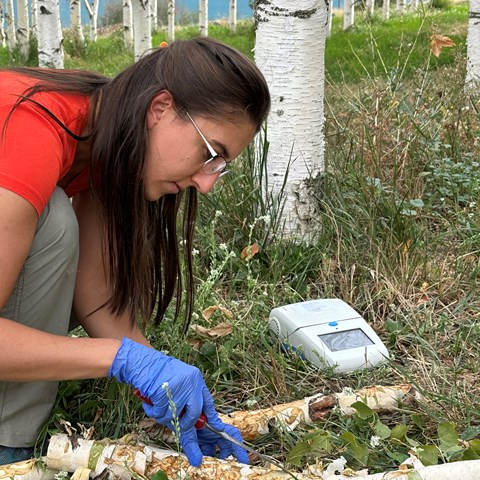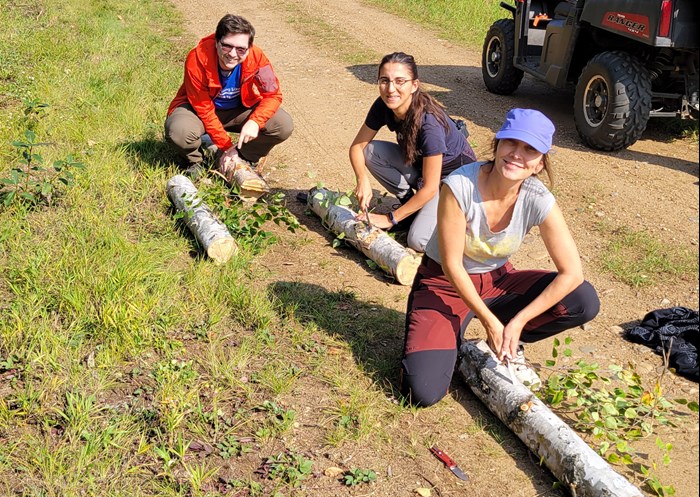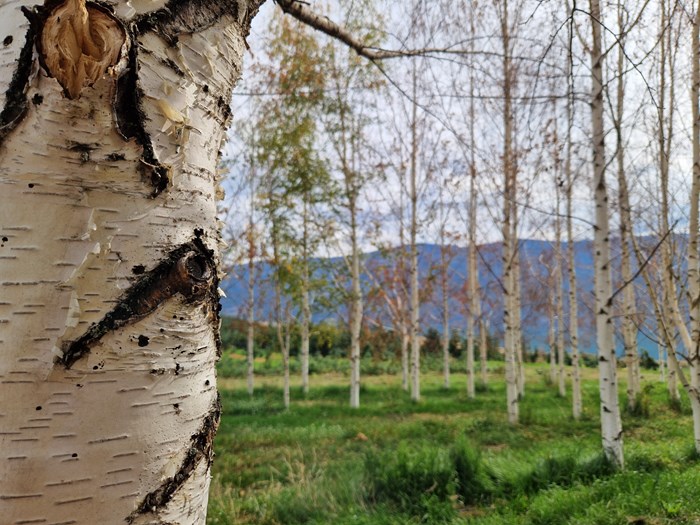Tool can detect possible destructive pest for Swedish birches

The increased use of broadleaf trees in Swedish forestry may bring new and yet undiscovered pests. A wood borer insect known as the bronze birch borer causes severe damage on birch in North America, and poses a major threat to birch species if it were to be introduced in Europe. Now researchers have developed and validated an early detection tool to increase our readiness to deal with a possible invasion of this exotic insect.
The bronze birch borer (Agrilus anxius) has not yet been found in Europe. It is, however, a major pest in North America where it causes severe damage on weakened or injured birch trees in both urban landscapes and boreal and temperate forests, causing economic and ecological consequences.
Field tests in Canada
During a field trip in Canada this autumn, PhD student Sezer Oliva Kaya together with her supervisors, Michelle Cleary and Donnie Lee Peterson, from the Southern Swedish Forest Research Centre at SLU, Alnarp, and Trees For Me, and Tod Ramsfield from the Canadian Forest Service in Alberta, tested technology which can provide fast results of the bronze birch borer already in the field.
Wood borer insects, such as the bronze birch borer, can be difficult to detect since they feed on the vascular tissue of their host plants and spend most of their lifecycle hidden in the tree. In a new study, partly based on the fieldwork in western Canada, the researchers have developed novel use of two molecular techniques known as quantitative polymerase chain reaction (qPCR) and loop-mediated isothermal amplification (LAMP) to identify the bronze birch borer. They have also evaluated the specificity and sensitivity of these methods for use as early detection tools for European forests, showing that both larvae and environmental DNA from frass (insect poop) obtained from attacked birch trees, can be detected easily, even at low quantities.
The results demonstrated that both tools are highly useful to detect the insect but the advantage of the LAMP method is that one can obtain results quickly, on-site (in the forest), which can allow for fast management decisions to be made in case of newly found invasions.
“LAMP allows for rapid detection in the field, and can take less than 40 minutes to get the result from an environmental sample. The qPCR method takes much longer since the sample needs to be collected in the field, transported to the laboratory, and then requires several hours/days of laboratory work to get to the final result”, says Donnie Lee Peterson.
Prevention work important
PhD student Sezer Olivia Kaya also assessed the susceptibility of silver birch to bronze birch borer at two birch provenance trials in British Columbia, Canada, in collaboration with tree breeding experts there. The work was done to try to clarify the impact the insect pest could have on European birch, and how Sweden and other European countries can prevent the introduction of the pest.
“Based on observations of European birch planted in North America, we can expect nearly 100% mortality of European birch if the bronze birch borer is introduced in Sweden. Hence we need to be proactive in terms of trying to prevent its establishment”, says PhD student Sezer Olivia Kaya.
The bronze birch borer causes foliage, branch and crown dieback, and distinct swelling of the bark on the branches and tree trunks that are attacked. In Canada, bronze birch borer has had a major role in the decline of the native birch population especially following drought years which tend to trigger attacks by the insect.
If introduced in Europe, the bronze birch borer would cause catastrophic damage in European birches, that is, silver birch (Betula pendula) and downy birch (Betula pubescens), as these species lack any evolutionary history with the pest and therefore have no defense lines against the pest.
“We can anticipate that the same devastation will happen to our European birch with the introduction of bronze birch borer as what has happened to North American ash (Fraxinus spp.) following the introduction of emerald ash borer - another exotic wood borer insect whose lifecycle and ecology are very similar to bronze birch borer”, says Michelle Cleary.
Collaborations across borders needed
In a new publication in the journal Environmental DNA, the researchers and their international co-authors highlight that early detection tools play a critical role in reducing the economic and ecological impact of pest invasions by preventing the introduction and establishment of new pests. The availability of this new tool for screening suspect material coming in at ports of entry or possible new outbreaks that may have established in nature will be a real game changer, according to the researchers.
Michelle Cleary has contributed to additional research showing that the costs of invasive species in the Nordics seem to be largely underestimated and that there is a clear gap in knowledge, policies and regulations for invasive species.
“Lessons learned from past invasions gone wrong is that the timing to identify a new threat is most critical. This early detection tool is not only important for authorities in Sweden but all around Europe. Because insect pests do not know national borders, it is important to work together in the international plant protection community to help safeguard our forest resources for the future”, Michelle Cleary concludes.
Contact
Southern Swedish Forest Research Centre
Southern Swedish Forest Research Centre
Southern Swedish Forest Research Centre

